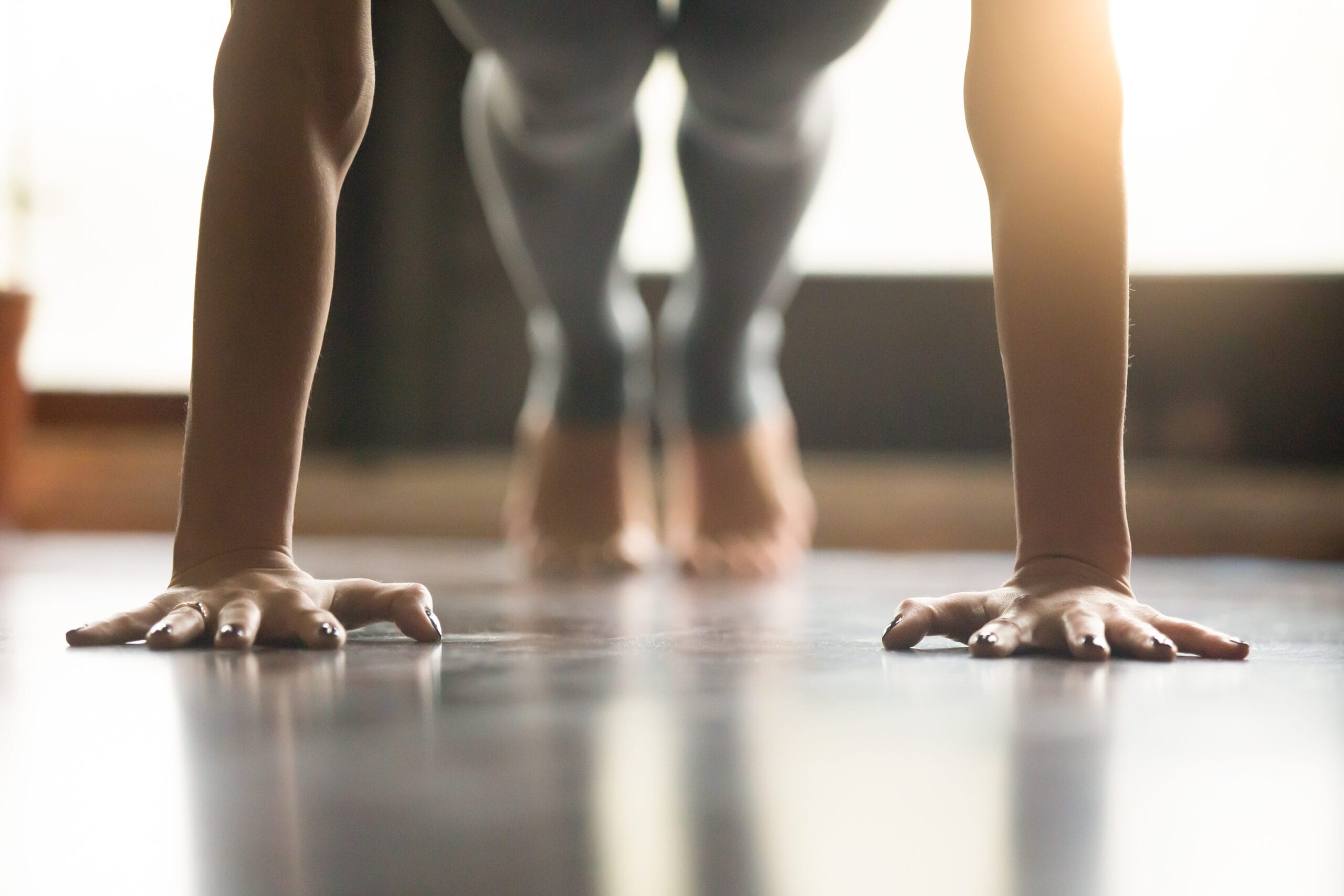
Don’t have the room or budget for a cardio machine?
No problem, you can still get your cardio in.
Embarking on a fitness journey doesn’t require an array of expensive equipment or a gym membership, it just takes a little know how and the the effort to make it happen.
It’s true, cardiovascular exercise, a critical component of any fitness regimen, can be achieved effectively without the need for specialized equipment.
And in this article, we’ll explore a variety of impactful cardio workouts that leverage your body weight and simple movements to elevate your heart rate, boost metabolism, and improve overall cardiovascular health.
First things first though.
Why Cardio Matters
Before diving into the workouts, let’s briefly discuss why cardiovascular exercise is essential in the first place.
Cardiovascular exercise, commonly known as cardio, encompasses a range of activities that elevate your heart rate and increase oxygen circulation throughout the body.
From running and swimming to cycling and dancing, incorporating cardio workouts into your fitness routine offers a bunch of health benefits that extend beyond weight management.
These include:
1. Improved Heart Health
One of the most significant benefits of cardio exercise is its positive impact on heart health.
Engaging in regular cardiovascular workouts strengthens the heart muscle, enabling it to pump blood more efficiently throughout the body.
Which, over time, can lead to a reduced resting heart rate, lower blood pressure, and improved circulation, reducing the risk of cardiovascular diseases such as heart attack, stroke, and hypertension.
2. Weight Management
For individuals looking to manage or lose weight, cardio exercise can be a highly effective tool.
By burning calories and increasing metabolism, cardiovascular workouts help create a calorie deficit, which can help lead to weight loss (especially when combined with a balanced diet).
Activities such as running, cycling, and swimming are particularly effective for burning calories and shedding excess pounds, making them popular choices for those seeking to achieve their weight loss goals.
3. Enhanced Endurance and Stamina
Engaging in regular cardio exercise improves endurance and stamina, enabling you to perform daily activities with ease and efficiency.
By challenging your cardiovascular system and increasing lung capacity, cardio workouts enhance your body’s ability to sustain prolonged physical activity, whether it’s climbing stairs, carrying groceries, or participating in sports and recreational activities.
4. Mood Enhancement and Stress Reduction
Cardiovascular exercise is not only beneficial for your physical health but also your mental well-being.
Regular cardio workouts stimulate the release of endorphins, neurotransmitters that act as natural mood lifters, reducing stress, anxiety, and symptoms of depression.
Additionally, the rhythmic movements and repetitive nature of many cardio exercises can help promote relaxation, mindfulness, and a sense of accomplishment, enhancing overall mental health and emotional resilience.
5. Improved Sleep Quality
Consistent cardio exercise has been linked to improved sleep quality and duration, promoting restful and rejuvenating sleep.
By reducing stress hormones such as cortisol and increasing body temperature, cardiovascular workouts help regulate sleep patterns, making it easier to fall asleep, stay asleep, and achieve deep, restorative sleep cycles.
As a result, individuals who engage in regular cardio exercise often experience increased energy levels, improved concentration, and enhanced overall productivity throughout the day.
6. Enhanced Metabolic Health
Engaging in regular cardio exercise can help regulate blood sugar levels, improve insulin sensitivity, and enhance metabolic health.
By promoting glucose uptake and utilization by muscles and tissues, cardiovascular workouts can even help reduce the risk of type 2 diabetes and metabolic syndrome.
Additionally, cardio exercise stimulates the production of HDL cholesterol, the “good” cholesterol, while reducing levels of LDL cholesterol and triglycerides, contributing to better overall metabolic health and reduced risk of chronic diseases.
Top Cardio Exercises That Don’t Require Equipment
1. Jumping Jacks
A classic yet effective cardio exercise, jumping jacks engage multiple muscle groups while elevating your heart rate. This full-body workout is suitable for all fitness levels and requires no equipment.
How to Perform:
- Start with your feet together and arms at your sides.
- Jump while spreading your legs and raising your arms above your head.
- Return to the starting position and repeat for 1-3 sets of 30-60 seconds.
This exercise is great because it can be done anywhere, including the office, be used as a warm up, or be used as part of a full bodyweight circuit.
2. Burpees
Burpees are a challenging, full-body exercise that combines strength training and cardiovascular benefits.
This dynamic movement targets multiple muscle groups, including the chest, shoulders, arms, core, and legs.
How to Perform:
- Begin in a standing position, then squat down and place your hands on the floor.
- Kick your feet back into a plank position, perform a push-up, and then jump your feet back towards your hands.
- Explosively jump into the air, reaching your arms overhead.
- Repeat for 3-5 sets of 10-15 repetitions, depending on your fitness level.
You can achieve a full workout by using this exercise alone – the fact that it uses pretty much every muscle in your body makes it challenging, so it won’t take long to get your heart rate up.
3. Mountain Climbers
Mountain climbers are a high-intensity exercise that targets the core, shoulders, and legs while providing a cardiovascular workout.
This exercise can also be performed anywhere, making it an excellent option for home workouts.
How to Perform:
- Start in a plank position with your hands shoulder-width apart.
- Drive one knee towards your chest, then quickly switch legs, resembling a running motion.
- Continue alternating legs for 1-3 sets of 30-60 seconds, maintaining a steady pace and engaging your core throughout the exercise.
We used to do this one at basketball practice and I’ve hated it ever since… but it’s still a potent tool when it comes to getting your heart rate up and your lungs working.
4. High Knees
High knees are a dynamic exercise that targets the lower body while elevating your heart rate.
This exercise improves coordination, balance, and cardiovascular endurance without the need for equipment.
How to Perform:
- Stand upright with your feet hip-width apart.
- Lift one knee towards your chest while hopping on the opposite foot.
- Alternate legs quickly, maintaining a brisk pace and pumping your arms for added momentum.
- Perform 3-5 sets of 30-60 seconds, focusing on maintaining proper form and intensity throughout the exercise.
If getting air-borne is out of the question, you can also simply march in place with high knees at a brisk pace.
5. Shadow Boxing
Shadow boxing is a fun and engaging cardio workout that incorporates boxing techniques to provide a full-body workout.
This exercise improves coordination, upper body strength, and cardiovascular endurance while relieving stress and enhancing agility.
How to Perform:
- Stand in a boxing stance with your feet shoulder-width apart and knees slightly bent.
- Punch the air with alternating jabs, crosses, hooks, and uppercuts, focusing on speed, power, and technique.
- Incorporate footwork, head movement, and defensive techniques to simulate a real boxing match.
- Perform 3-5 rounds of 2-3 minutes, alternating between punching combinations and active recovery periods to maintain intensity and engagement.
This is a good choice when you’ve had a rough week and need to get some tension out – remember, you can imagine you’re punching anyone you want.
How Often Should You Do Cardio Workouts Per Week? Finding Your Ideal Frequency
Cardiovascular exercise is a fundamental component of a balanced fitness regimen, offering a plethora of health benefits ranging from improved heart health and weight management to enhanced mood and overall well-being.
However, determining the optimal frequency of cardio workouts per week can be challenging, as individual needs, goals, and fitness levels vary.
Let’s explore some of the factors to consider when determining how often you should engage in cardio exercise providing guidance to help you find your ideal frequency for optimal results and sustainability.
Factors to Consider
Before delving into specific recommendations, it’s essential to consider several factors that influence your cardio workout frequency:
- Fitness Goals: Your fitness objectives, whether they involve weight loss, endurance improvement, or overall health enhancement, play a crucial role in determining your cardio workout frequency. Different goals may require varying levels of intensity, duration, and frequency to achieve desired outcomes effectively.
- Current Fitness Level: Your current fitness level and experience with cardiovascular exercise influence how often you should engage in cardio workouts. Beginners may need to start slowly and gradually increase frequency, duration, and intensity, while more experienced individuals may tolerate and benefit from more frequent and challenging workouts.
- Recovery and Rest: Adequate rest and recovery are essential components of any effective fitness regimen, including cardio exercise. Overtraining or neglecting rest days can lead to fatigue, injury, and burnout, emphasizing the importance of balancing cardio workouts with sufficient recovery time to optimize performance and results.
- Time Availability: Your schedule, commitments, and time availability significantly impact your ability to consistently engage in cardio workouts. Balancing work, family, social obligations, and other priorities with your fitness routine helps create a sustainable and enjoyable exercise regimen tailored to your lifestyle.
General Guidelines
While individual needs and circumstances vary, several general guidelines can help you determine how often you should do cardio workouts per week:
Beginners (1-3 Months)
- Frequency: Aim for 3-4 cardio workouts per week, incorporating a mix of low to moderate-intensity activities such as brisk walking, cycling, swimming, or dancing.
- Duration: Start with 20-30 minute sessions, gradually increasing duration as your fitness level improves and you build endurance.
- Rest and Recovery: Allow at least 1-2 rest days per week to facilitate recovery, prevent fatigue, and minimize injury risk.
Intermediate (3-6 Months)
- Frequency: Gradually increase to 4-5 cardio workouts per week, incorporating a combination of moderate-intensity workouts and maybe even 1-2 higher-intensity sessions (like HIIT workouts) to boost cardiovascular fitness and calorie burn.
- Duration: Aim for 30-45 minute sessions, alternating between different activities and intensity levels to maintain variety and challenge your body.
- Rest and Recovery: Incorporate 1-2 rest or active recovery days per week, focusing on flexibility, mobility, and low-impact activities such as yoga or gentle stretching to promote recovery and reduce muscle soreness.
Advanced (6+ Months)
- Frequency: Perform 5-7 cardio workouts per week, including a mix of moderate-intensity steady-state (MISS) workouts, HIIT sessions, and active recovery days to optimize performance, endurance, and recovery.
- Duration: Extend sessions to 45-60 minutes or more, depending on your goals, preferences, and fitness level, incorporating interval training, circuit workouts, and cross-training activities to enhance cardiovascular fitness and overall conditioning.
- Rest and Recovery: Prioritize rest, recovery, and periodization to prevent overtraining, optimize performance, and sustain long-term progress, incorporating adequate sleep, nutrition, and stress management strategies into your routine to support overall health and well-being.
Final Thoughts
Effective cardio workouts don’t necessarily require fancy equipment or a trip to the gym.
By leveraging your body weight and incorporating dynamic movements such as jumping jacks, burpees, mountain climbers, high knees, and shadow boxing, you can achieve a challenging and effective cardiovascular workout at home or on the go.
Remember to warm up properly, stay hydrated, and listen to your body’s cues to prevent injury and optimize performance.
Consistency is key, so aim to incorporate these exercises into your weekly routine to reap the numerous health benefits associated with cardiovascular exercise.
And it wasn’t mentioned earlier, but good ol’ fashioned walking is always great for a low impact cardio workout too and it doesn’t require any equipment either.
When creating your own workouts, feel free to mix and match the above exercises, create your own circuits, or simply pick one and do as may sets as you can for your desired time limit.
Be creative and keep things interesting and you’ll be more likely to stay motivated.


